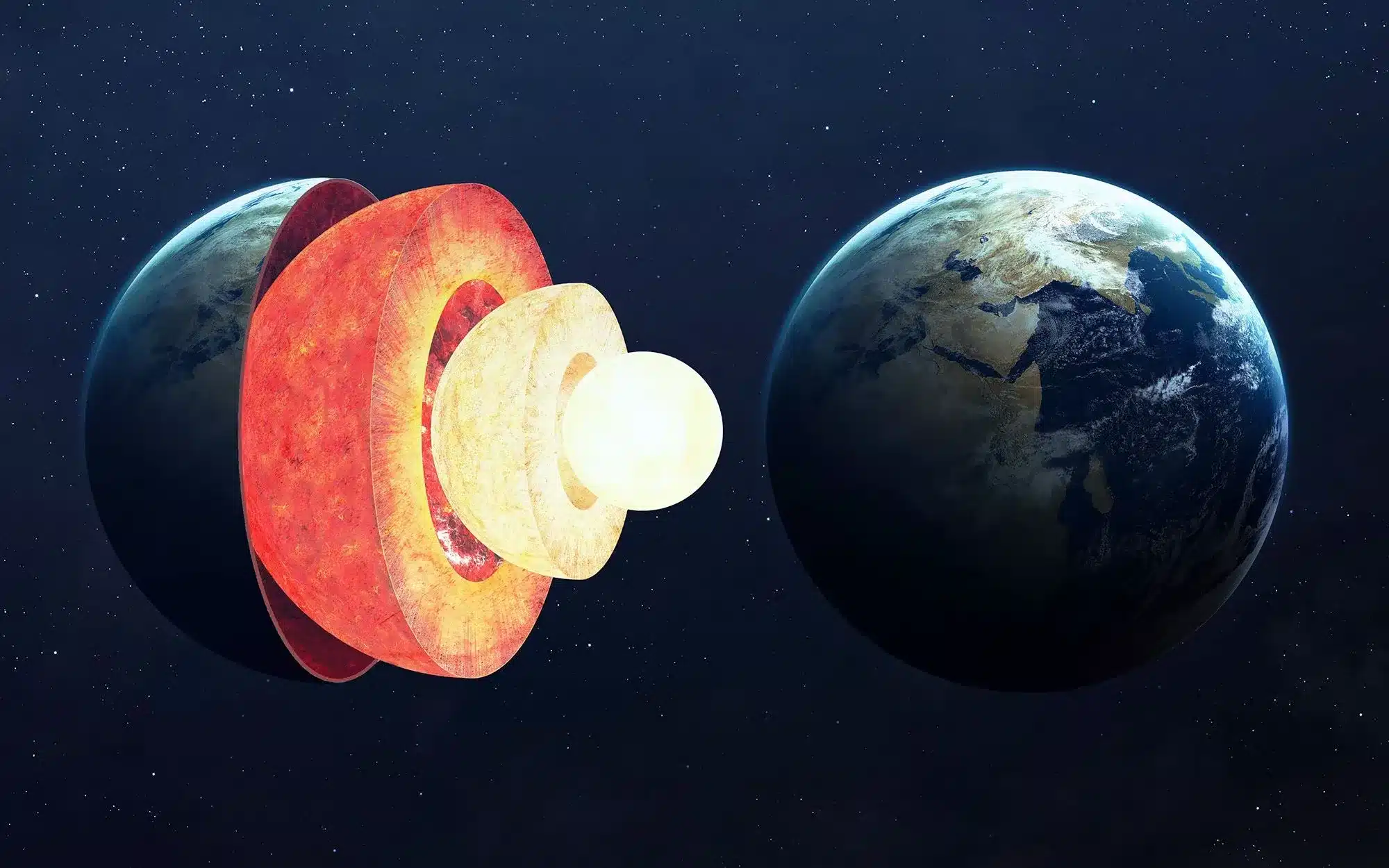About Earth’s Inner Core:
- It is the innermost part of Earth.
- It is located at the Earth’s center, approximately 5,150 kilometers (3,219 miles) beneath the Earth’s surface.
- It is a solid metallic ball primarily composed of iron and nickel.
- It makes up around 20 percent of the Earth’s mass.
- It has a radius of about 759 miles (1,221 kilometers).
- It is extremely hot,with temperatures ranging from 7200–9000℉ (4000–5000℃).
- The primary contributors to the inner core’s heat are the decay of radioactive elements such as uranium, thorium, and potassium in Earth’s crust and mantle, residual heat from planetary formation, and heat emitted by the solidification of the outer core.
- It is under intense pressure of about 3.6 million atmospheres (atm), which keeps it solid despite high temperatures.
- It is surrounded by the outer core—a superhot layer of molten metals similar to those in the inner core—which is surrounded by a more solid sea of molten rock, known as the mantle, and the crust.
- The boundary between the inner and outer cores is called the Lehman Seismic Discontinuity.
- The inner core generates its own magnetic field.
- Despite its small volume (less than 1% of the Earth’s volume), the Earth’s inner core contains about 10% of the total magnetic field energy.
- It plays a crucial role in outer core liquid motions and the geodynamo, which generates the Earth’s magnetic field.
It rotates in the same direction as the surface of the planet but a bit faster than the rest of the planet.
Q1: What is Mantle?
The mantle is the mostly solid bulk of Earth’s interior. The mantle lies between Earth’s dense, super-heated core and its thin outer layer, the crust. The mantle is about 2,900 kilometers (1,802 miles) thick, and makes up a whopping 84 percent of Earth’s total volume.The rocks that make up Earth’s mantle are mostly silicates—a wide variety of compounds that share a silicon and oxygen structure. The temperature of the mantle varies greatly, from 1000°C (1832°F) near its boundary with the crust, to 3700°C (6692°F) near its boundary with the core.
Source: Earth’s core is now rotating in reverse direction, slowing down: What does it mean?
Last updated on December, 2025
→ Check out the latest UPSC Syllabus 2026 here.
→ Join Vajiram & Ravi’s Interview Guidance Programme for expert help to crack your final UPSC stage.
→ UPSC Mains Result 2025 is now out.
→ UPSC Notification 2026 is scheduled to be released on January 14, 2026.
→ UPSC Calendar 2026 is released on 15th May, 2025.
→ The UPSC Vacancy 2025 were released 1129, out of which 979 were for UPSC CSE and remaining 150 are for UPSC IFoS.
→ UPSC Prelims 2026 will be conducted on 24th May, 2026 & UPSC Mains 2026 will be conducted on 21st August 2026.
→ The UPSC Selection Process is of 3 stages-Prelims, Mains and Interview.
→ UPSC Result 2024 is released with latest UPSC Marksheet 2024. Check Now!
→ UPSC Prelims Result 2025 is out now for the CSE held on 25 May 2025.
→ UPSC Toppers List 2024 is released now. Shakti Dubey is UPSC AIR 1 2024 Topper.
→ UPSC Prelims Question Paper 2025 and Unofficial Prelims Answer Key 2025 are available now.
→ UPSC Mains Question Paper 2025 is out for Essay, GS 1, 2, 3 & GS 4.
→ UPSC Mains Indian Language Question Paper 2025 is now out.
→ UPSC Mains Optional Question Paper 2025 is now out.
→ Also check Best IAS Coaching in Delhi

















